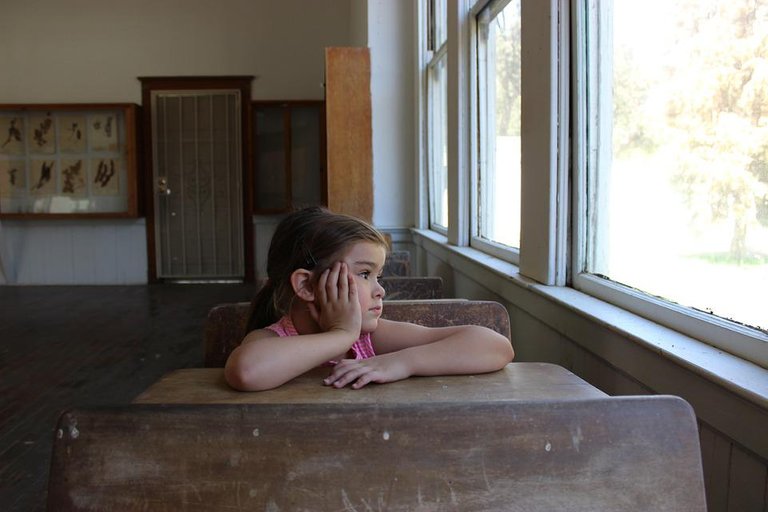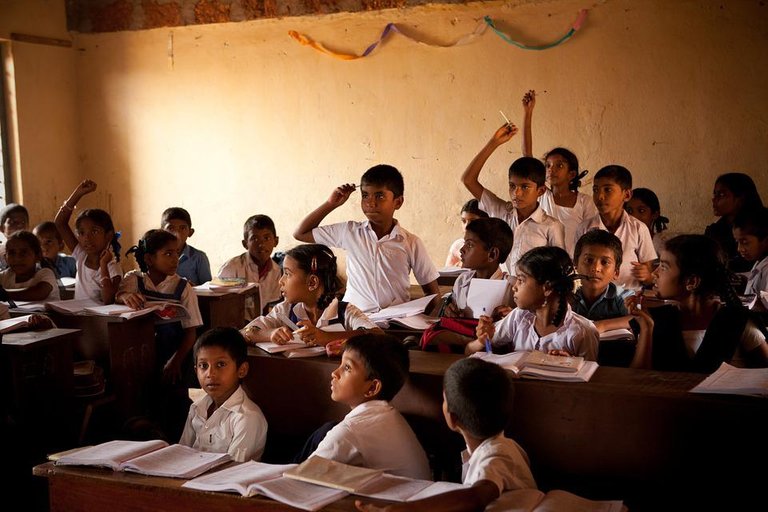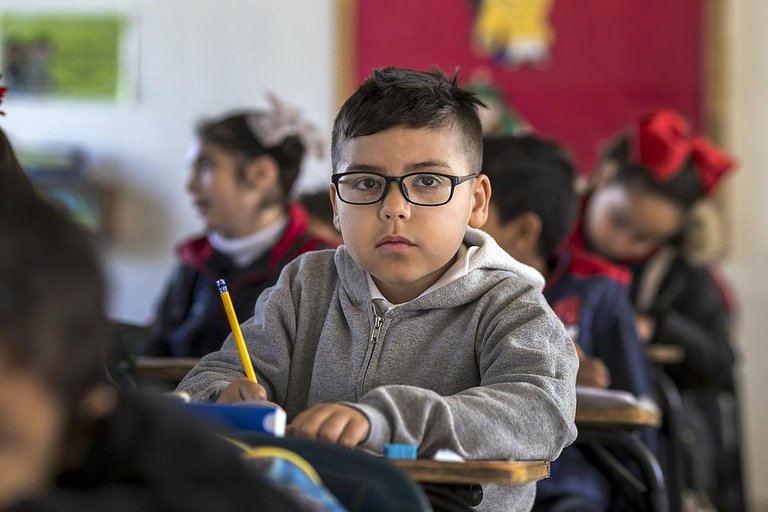Esta parece una pregunta con una respuesta obvia: “Claro que sé”; pero lo cierto es que 1 de cada 3 niños ha agredido a algún compañero en alguna oportunidad. Entonces, mamá ¿Estás realmente segura de lo que le sucede a tu hijo en la escuela? ¿Estás realmente segura de que no es o ha sido víctima de acoso? ¿Estás realmente segura de que tu hijo no es un acosador?
This seems like a question with an obvious answer: “Of course I know”; but the truth is that 1 out of 3 children has attacked a classmate at some time. So, mom, are you really sure what happens to your son at school? Are you really sure that he is not or has not been a victim of bullying? Are you really sure that your child is not a bully?

De sólo escribir estas preguntas se me ponen los pelos de punta, nadie quiere enterarse de que un hijo es víctima (o victimario) de nada en la vida, pero a estas alturas tenemos que armarnos de valor y unir esfuerzos para que este mal que pareciera que se nos va de las manos, termine de una vez.
Just writing these questions makes my hair stand on end, no one wants to find out that a child is a victim (or victimizer) of anything in life, but at this point we have to arm ourselves with courage and join forces so that this evil that seems that is getting out of hand, finish once and for all.
No podemos enfrentar a este monstruo si no sabemos qué es y cuáles son sus implicaciones. En inglés, se le dice bullying y su significado es intimidación; sin embargo, el concepto de acoso escolar es mucho más amplio, este se refiere a todas las formas de actitudes agresivas, intencionadas y repetidas, que ocurren sin motivación evidente, adoptadas por uno o más estudiantes contra otro u otros.
We cannot confront this monster if we do not know what it is and what its implications are. In English, it is called bullying and its meaning is intimidation; however, the concept of bullying is much broader, it refers to all forms of aggressive, intentional and repeated attitudes, which occur without obvious motivation, adopted by one or more students against another or others.
A este tipo de violencia debemos sumar la aparición del aterrador cyberbullying, donde los menores que sufren acoso, pierden el único espacio que tenían donde estar en paz: su casa; conviviendo a cada minuto con el acosador.
To this type of violence we must add the appearance of the terrifying cyberbullying, where minors who suffer harassment lose the only space they had where they could be in peace: their home; living every minute with the stalker.


La medida de edades de las víctimas de acoso está en los 10 años, mientras que la de los acosadores oscila entre 11 y 13 años, así que el "mi hijo está muy chiquito para eso", no aplica en este caso. Muchas veces no tienen intención de dañar a otro, pero su compañero que si lo hace, lo amenaza y obliga, sino ya no es su amigo.
The average age of the victims of bullying is 10 years old, while that of the bullies ranges between 11 and 13 years old, so "my son is too young for that" does not apply in this case. Many times they have no intention of harming another, but their partner who does, threatens and forces him, otherwise he is no longer his friend.
En ocasiones las agresiones directas son a base de patadas, empujones y golpes con objetos. También puede ser indirecto, cuando se producen daños materiales o robos en los objetos personales del niño. Así mismo la agresión verbal deja huella en la víctima, las palabras tienen mucho poder y mina la autoestima mediante humillaciones, insultos, menosprecios en público y propagación de rumores falsos.
Sometimes the direct aggressions are based on kicks, pushes and blows with objects. It can also be indirect, when there is material damage or theft of the child's personal belongings. Likewise, verbal aggression leaves its mark on the victim, words have a lot of power and undermine self-esteem through humiliation, insults, contempt in public and the spread of false rumors.
El objetivo principal del acosador es provocar miedo mediante amenazas, simplemente para obligar a la víctima a hacer cosas que no quiere ni debe hacer, mediante la exclusión o aislamiento progresivo de la víctima. En la práctica, los acosadores impiden a la víctima participar, bien sea ignorando su presencia y no contando con él/ ella en las actividades normales entre amigos o compañeros de clase.
The main objective of the stalker is to provoke fear through threats, simply to force the victim to do things that they do not want or should do, by progressively excluding or isolating the victim. In practice, bullies prevent the victim from participating, either by ignoring his/her presence and not counting on him/her in normal activities among friends or classmates.


Ahora piensa bien mamá: ¿Has visto a tu hijo llegar golpeado o arañado a casa? ¿Tu hijo está más nervioso de lo habitual? ¿Tiene pesadillas, problemas con la comida o busca excusas para no ir al colegio? ¿Tiene amigos en el colegio? ¿Se ve triste o cansado? Todas estas señales son motivos de alerta.
Now think about it mom: Have you seen your son come home beaten or scratched? Is your child more nervous than usual? Do you have nightmares, problems with food or are you looking for excuses not to go to school? Do you have friends at school? Does he look sad or tired? All of these signs are cause for alert.
Si tu hijo presenta todas estas alertas, no entres en pánico, tu hijo te necesita entera, aunque seas un manojo de nervios demuéstrale que tú estás en la capacidad de tomar las riendas del asunto y ayudarlo. Habla con él, rompe el silencio, pero sobre todo, escúchalo, si no, a la larga se pueden generar daños severos sobre la autoestima del niño, así como cuadros de somatizaciones, estrés postraumático, depresión y en casos más graves, conductas autolíticas (la víctima se produce lesiones de diferente gravedad). Nunca pongan en duda el relato de su hijo.
If your child presents all these alerts, do not panic, your child needs you whole, even if you are a bundle of nerves, show him that you are able to take charge of the matter and help him. Talk to him, break the silence, but above all, listen to him, otherwise, in the long run, severe damage can be caused to the child's self-esteem, as well as somatization, post-traumatic stress, depression and, in more serious cases, self-injurious behavior ( the victim produces injuries of different severity). Never question your child's story.
Pide una cita con el maestro del niño, debe haber un frente firme para parar el acoso. Es el maestro quien podrá ver cómo se comporta el niño y sus compañeros dentro del aula. Dependiendo de la gravedad del caso, considera avisar a la policía. Y sobre todo mantén una comunicación fluida con tu hijo durante todo el proceso, elige la información que vas a darle, para no generar más ansiedad y nuevamente escúchalo.
Make an appointment with the child's teacher, there must be a firm front to stop the bullying. It is the teacher who will be able to see how the child and his classmates behave in the classroom. Depending on the severity of the case, consider calling the police. And above all, maintain fluid communication with your child throughout the process, choose the information you are going to give him, so as not to generate more anxiety and listen to him again.


Separador de texto realizado por mi en Canva
Text separator made by me in Canva
Texto traducido con DeepL
Translated text with DeepL
